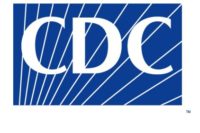Ebola containment strategy succeeding in Liberia

 The CDC’s Rapid Isolation and Treatment of Ebola (RITE) strategy is helping to end the Ebola epidemic in Liberia, according to new data reported in this week's Morbidity and Mortality Weekly Report (MMWR).
The CDC’s Rapid Isolation and Treatment of Ebola (RITE) strategy is helping to end the Ebola epidemic in Liberia, according to new data reported in this week's Morbidity and Mortality Weekly Report (MMWR).
The strategy—a rapid, coordinated response to Ebola cases in remote areas—is now being used in Sierra Leone and Guinea.
Getting closer to zero cases
"Whether it's traveling by air, jeep, canoe, or walking many miles on foot to find every case of Ebola, the RITE teams are helping Liberia get closer to zero cases than ever before," said CDC Director Tom Frieden, M.D., M.P.H. "It's critical that we continue to support these teams – and to expand their work into Sierra Leone and Guinea to help to get the epidemic under control there as well."
RITE was developed by the U.S. Centers for Disease Control and Prevention (CDC) and the Liberian Ministry of Health and Social Welfare. The strategy focuses on maintaining investigation- and response-ready health teams (RITE teams) poised to deploy to remote areas as soon as a report of a suspected Ebola case is received. The teams take the lead in coordinating the assistance from the central Ministry and international partners needed to plan, manage, and track a response effort. The teams have the expertise and basic supplies needed to:
- Rapidly isolate and treat Ebola patients, either by establishing facilities in the community or safely transporting patients to existing Ebola Treatment Units (ETUs)
- Collect patient blood samples and transport them to labs for Ebola confirmation
- Ascertain the index case – that is, the first person to bring Ebola into the community – to understand importation and transmission patterns
- Identify all generations of cases (i.e., the first generation is people infected by the index patient, the second generation is people infected by those in the first generation, and so on)
- Train community teams in safe burial practices
- Observe contacts of Ebola patients for 21 days from the death or ETU admission of the last case to ensure the outbreak is over.
Before and after
Compared to six outbreaks in Liberia that began before RITE was implemented, six outbreaks after RITE lasted less than half as long, had a lower death rate, had shorter chains of transmission, and had nearly three times as many Ebola patients enter isolation and receive treatment.
The RITE strategy launched in early October 2014. By November, the strategy had expanded to include the packaging of "RITE kits" for rapid delivery to affected counties. These kits contain commodities essential for the first 14 days of response: oral rehydration solution, antimalarial medication and antibiotics, personal protective equipment, and construction materials for building temporary isolation and treatment facilities.
To measure the effectiveness of the RITE strategy, CDC and Liberian Ministry researchers analyzed data from 12 outbreaks in remote areas of Liberia: six that began between July 16 and October 1, before the RITE strategy; and six that began after the October 1 initiation of the RITE strategy.
There were striking differences:
The median time between symptom onset in the first reported case and an alert received by the county health teams was 40 days for the early outbreaks compared with 22 days for the later outbreaks.
The median duration of the early outbreaks was 53 days compared with 25 days for the later outbreaks.
The median number of generations of cases (circles of transmission from the index case) was three for the early outbreaks compared with 1.5 for the later outbreaks. Four of the six outbreaks before the development of the RITE strategy remained undetected until they were in at least the third generation of transmission. After RITE was implemented, five of the six subsequent outbreaks were detected in the first or second generation.
The proportion of patients in each outbreak that was isolated and treated increased from a median of 29 percent in the early outbreaks to 80 percent in the later outbreaks.
The proportion of laboratory-confirmed cases increased from a median of 41 percent in the early outbreaks to 80 percent in the later outbreaks. This happened because a larger proportion of case-patients reached treatment facilities and sample collection in the field improved as part of the RITE strategy.
The case-fatality rate was 89 percent in the early outbreaks compared with 50 percent in the later outbreaks.
Podcast - http://www2c.cdc.gov/podcasts/player.asp?f=8635745
Looking for a reprint of this article?
From high-res PDFs to custom plaques, order your copy today!





